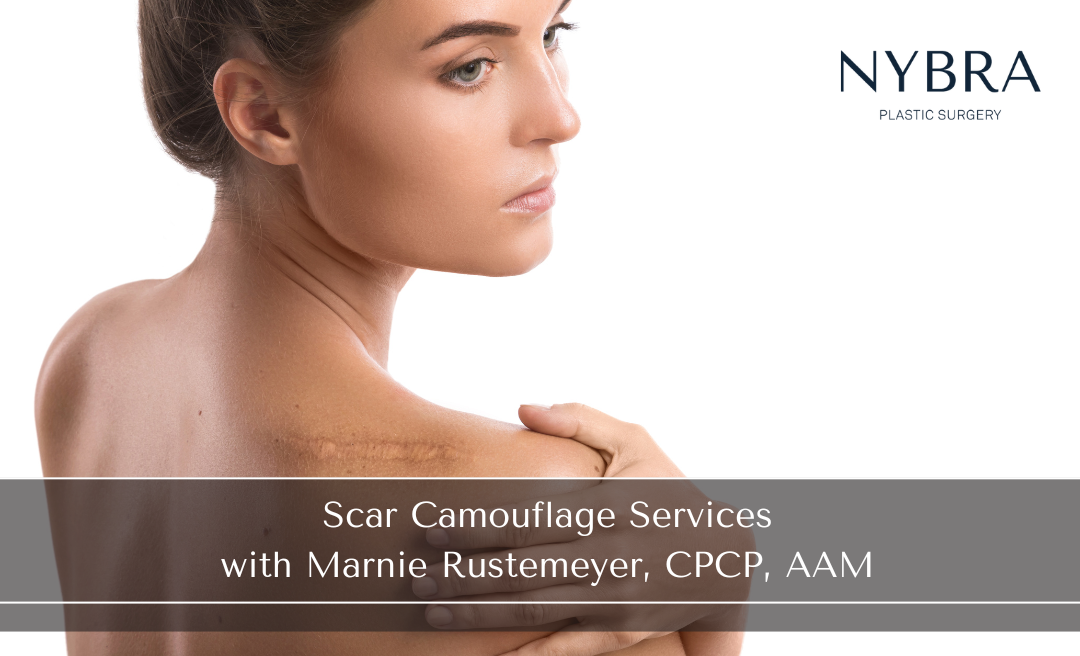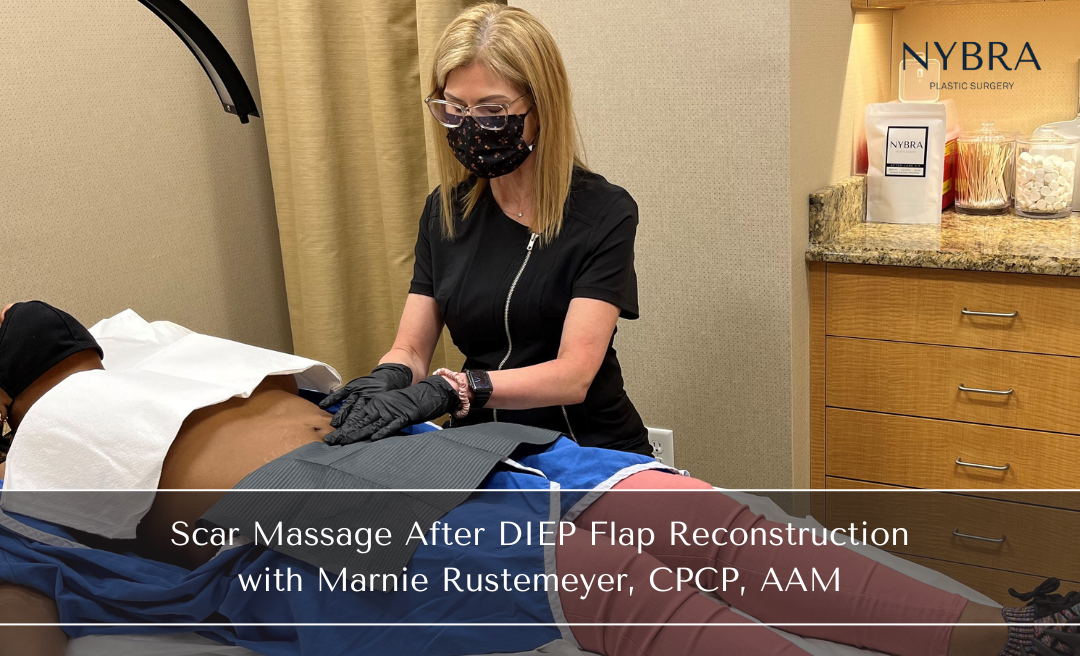What is Scar Camouflage and How Does it Work?
October 28, 2022
One of the key topics that comes up when we talk about scar management is scar camouflage. Scar camouflage is exactly what it sounds like: a procedure that disguises scars such that they are less distinguishable from surrounding, healthy skin. In some cases, that involves tattooing scarred or compromised skin with pigment that is tailored to match a patient’s skintone. In other cases, it involves stimulating collagen or implementing a serum that changes the texture and tone of the skin in the scar.
While NYBRA’s surgical team does everything in its power to minimize incisions and scars are often an inevitable part of healing. Whether it arises after a surgery, an injury, an autoimmune disorder, or other trauma, visible scarring can be physically and emotionally uncomfortable. Scar camouflage can mitigate those impacts.
Scar camouflage can be done without ink.
Ink is not always required to conceal a scar. Inkless scar camouflage is an approach that uses the same set of fine, rotating needles that scar camouflage tattooing uses. Instead of implementing pigment, the process of using a tattooing instrument without ink can stimulate blood flow and collagen production. I sometimes recommend a lightening serum in conjunction with inkless scar camouflage to reduce hyperpigmentation in the scar.
Scar camouflage with pigment is best suited for patients with lighter scars.
Tattooing using pigment is most effective on scars that are paler than the surrounding skin. When the scar is a lighter color than a patient’s pallor, I create a custom mix of pigments that matches their skin type. I then tattoo that pigment into the scar to conceal it.
All restorative tattooing and scar camouflage is a minimally invasive, in-office procedure.
After a consultation, I use a machine to tattoo pigment into the upper layer of the dermis. Scar camouflage tends to cause minimal discomfort, regardless of whether pigment is used. In rare instances I apply topical anesthetic to make a patient more comfortable, however this is usually unnecessary. Overall, the procedure recovery and downtime are quite minimal.
This is not a one-and-done approach.
Patience is key when working with scar tissue. It is essential to understand that whatever approach we choose together is usually not a one-shot step. It typically takes at least three sessions to see a really good result.
Abdominal Scar Massage After DIEP Flap Breast Reconstruction
DIEP flap breast reconstruction takes place along on the lower abdomen and typically leaves a scar. This type of abdominal scar is a great candidate…
